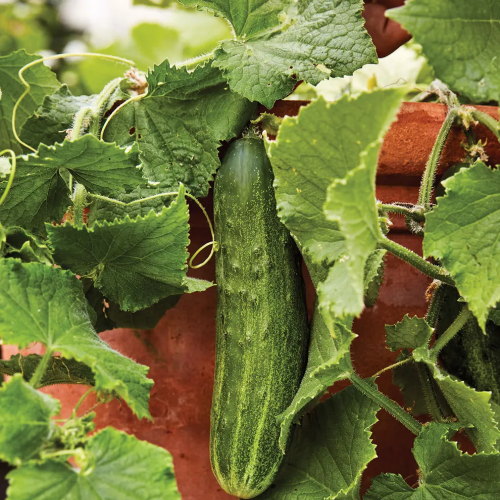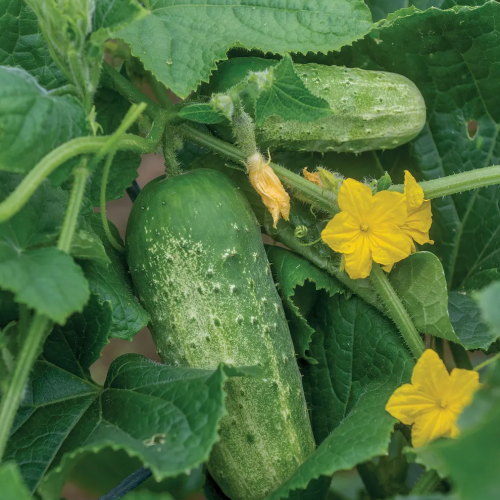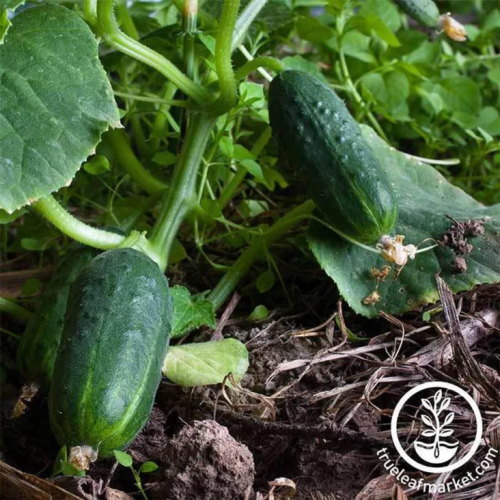How to grow cucumbers indoors – experts reveal 5 things you must get right for great harvests without needing any outdoor space
Discover why variety, lighting, care are essential to a great cucumber harvest
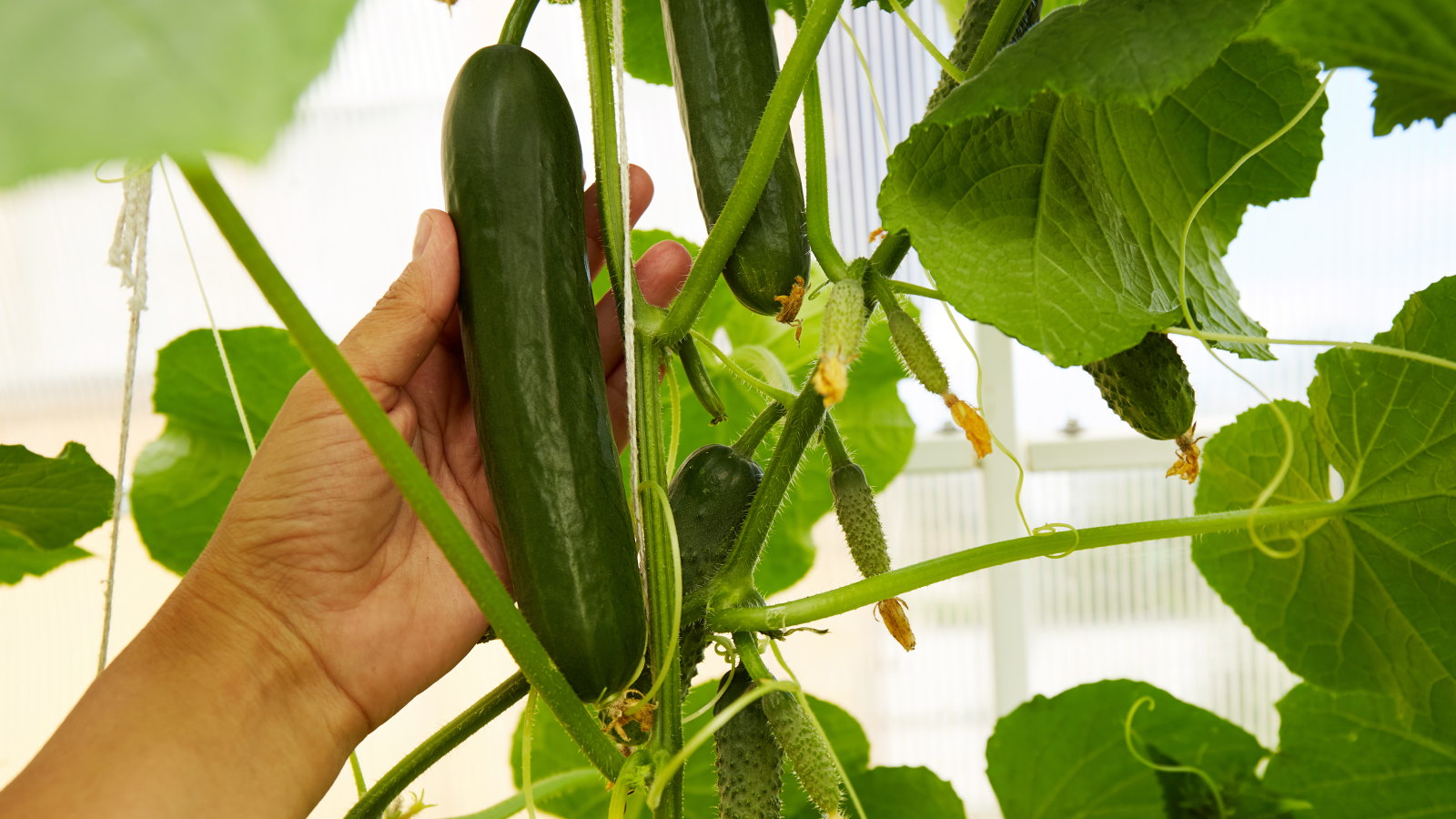
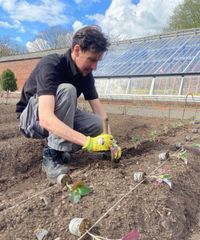
Cucumbers may conjure images of large, vining plants requiring lots of garden space. You could think such plants would be unsuitable for growing indoors, however, you can grow cucumbers indoors provided you make good choices and give plants the right conditions.
Some key caveats will help ensure you grow cucumbers indoors successfully. These include picking smaller varieties with characteristics that can make life easier. Plus, you must give them the right light, warmth, and nutrients to develop healthily and produce a top crop.
If you want to grow cucumbers indoors, we are here to help. I spoke to some expert growers to be able to disclose these five important factors to get right, so your indoor cucumber plants will thrive.
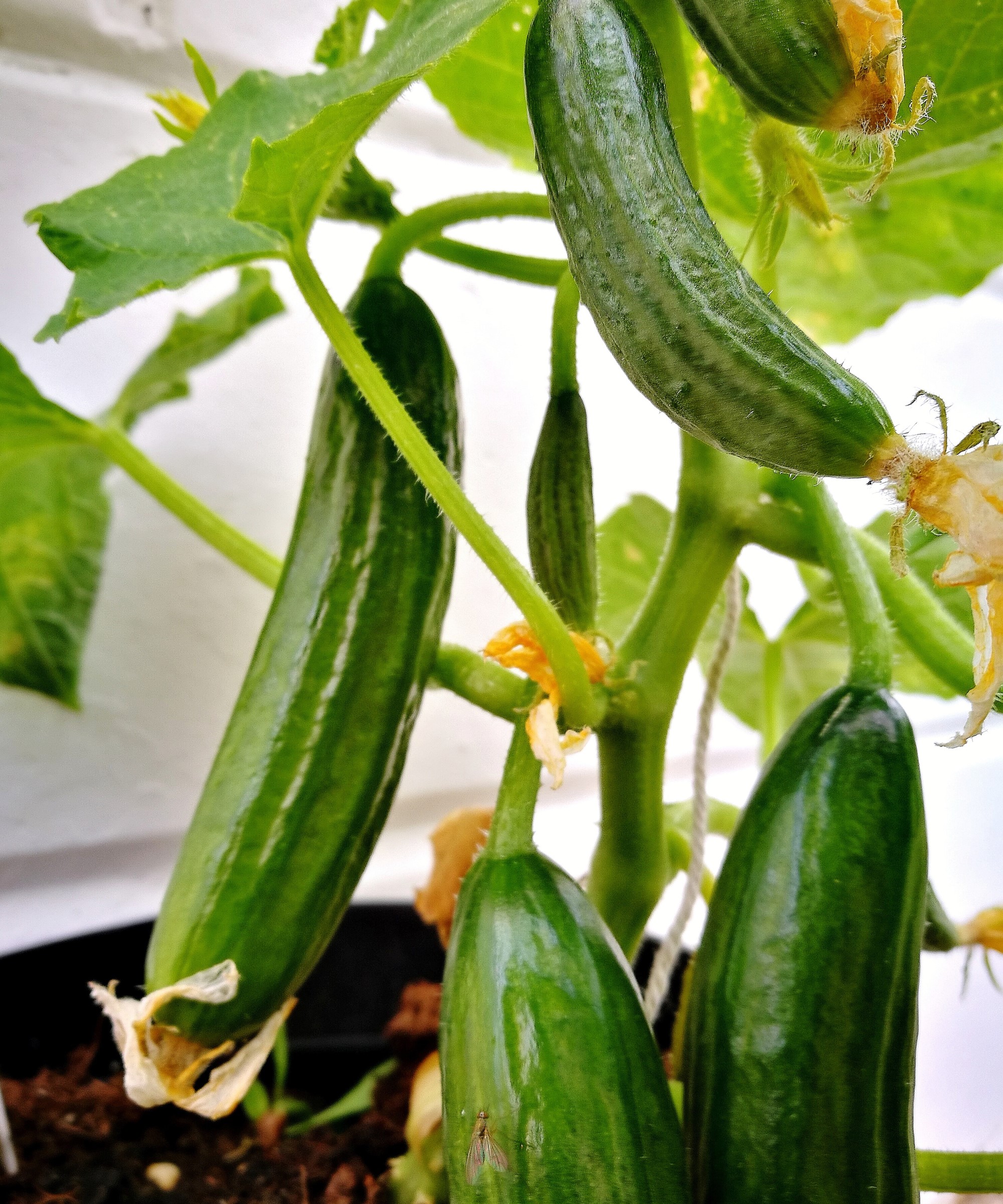
Can you grow cucumbers indoors?
Cucumber is a vegetable you can grow indoors in a greenhouse, polytunnel, conservatory, porch, or on a sunny windowsill. Some of those locations will be easier than others, however, as you need to get the growing conditions right for cucumbers to thrive indoors.
From my own experience, I have had success growing cucumbers in a polytunnel, but they did require regular monitoring and maintenance. However, despite the potential challenges, there are some advantages to growing cucumbers indoors.
For example, as Amy Enfield, plant expert and senior horticulturalist at Scotts Miracle-Gro, says: ‘One of the best things about growing cucumbers indoors is that you have control over their growing environment, which means you can have fresh cucumbers way past the usual spring and summer seasons.
‘Plus, indoor growing means you’ll dodge a lot of the pesky bugs and diseases that outdoor cucumbers have to deal with. The key to a happy indoor cucumber plant is all about making it feel like it’s still outside with the right amount of light, ideal temperatures and humidity levels.’
Design expertise in your inbox – from inspiring decorating ideas and beautiful celebrity homes to practical gardening advice and shopping round-ups.

Amy Enfield has over 25 years of experience in the Lawn & Garden industry and has been with ScottsMiracle-Gro for 11 years. She has a BS and MS in Horticulture from Michigan State University and a PhD in Plant & Environmental Sciences from Clemson University.
5 expert tips for growing indoor cucumbers
Dr. William Reichert, a plant biologist and founder of Doomsday Gardens, adds that indoor cucumbers are not the easiest vegetables to grow, but it is possible.
‘They’re fast-growing, light-hungry, and heavy feeders, so you’ll need to get serious about lighting and airflow,’ he warns. ‘If you can dial in those variables, indoor cucumbers are absolutely doable.’
To help you grow cucumbers indoors successfully, these are the 5 key areas to get right.
1. The choice of variety will make a difference
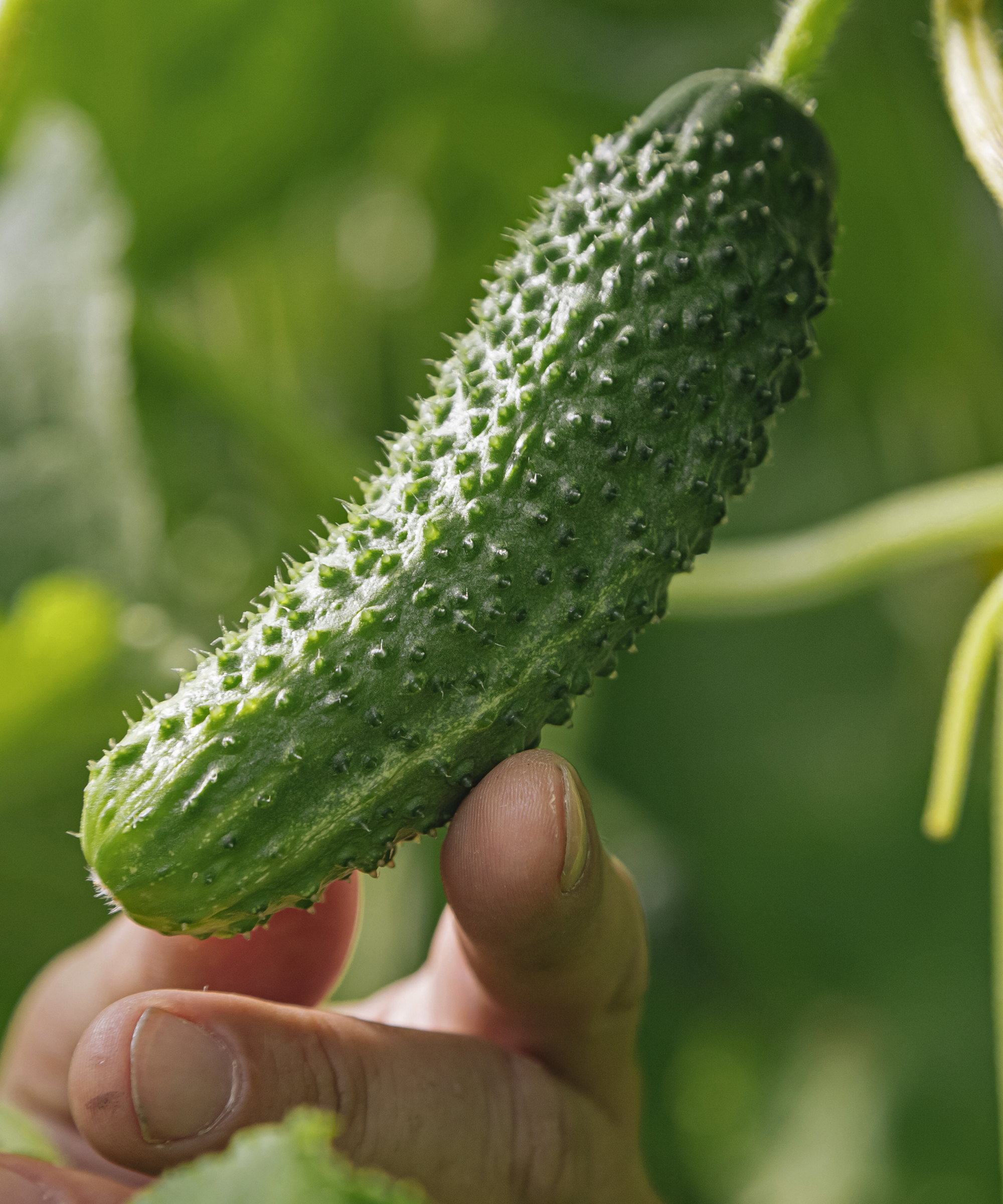
In many situations, space will be a concern when you grow cucumbers indoors. Unless you are lucky enough to have lots of space and indoor growing beds, you will need to be growing cucumbers in pots.
Bush or dwarf types of cucumbers are best suited to growing in containers and should be the primary choice for growing cucumbers indoors. Dr. William Reichert highlights two cucumber varieties, ‘Bush Champion’ and ‘Spacemaster’, that are specially bred for smaller growing spaces.
It is also beneficial to opt for parthenocarpic cucumber varieties, which are self-pollinating and do not require pollinators, or a gardener acting as a bee, to produce fruit. There are self-pollinating bush cucumber varieties, including ’Quick Snack’, ‘Iznik’, ‘Saladbush hybrid’, ‘Spacemaster 80’, and ‘Picklebush’.
2. Give plants enough light to prosper
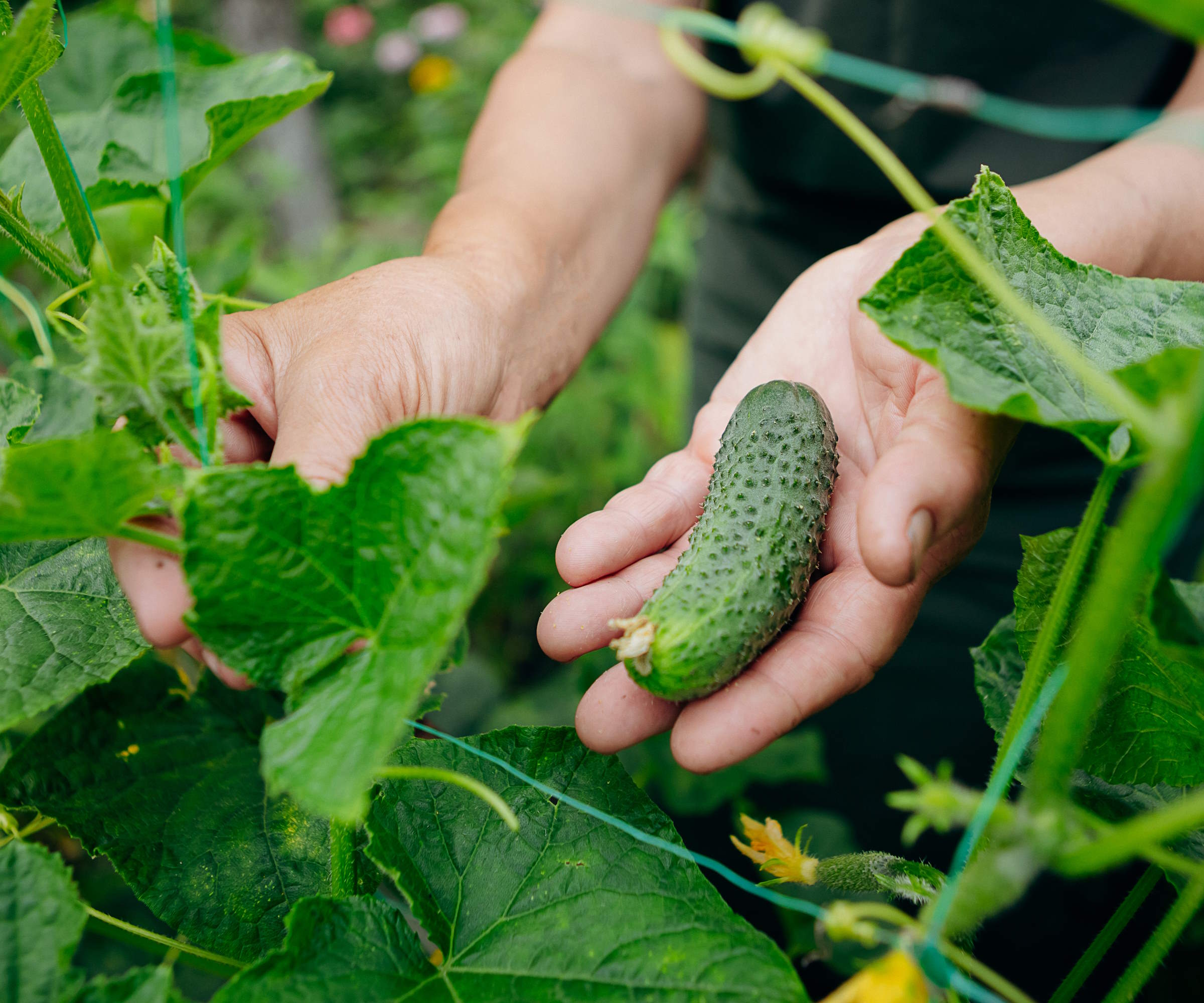
Providing the right light levels makes the difference between success and failure with growing cucumbers indoors, or any plants.
If you can grow your cucumbers in a large greenhouse, it might not be as much of an issue. However, plants inside the home may struggle to grow healthily unless they get at least 6-8 hours of direct sunlight each day.
While this can be achieved from a large south-facing window with zero obstructions, the plants may need LED grow lights (see the range of LED grow lights at Amazon) to supplement the natural levels to prevent plants from getting leggy and not forming flowers.
'You'll want to keep the lights on for 12-14 hours a day,' claims Amy Enfield. 'Full-spectrum LED grow lights that mimic natural sunlight are energy-efficient and work really well. Position them a few inches above the plants (about 6-12 inches), and adjust as they grow.'
3. Get the temperature right

As well as getting the light right, temperature and humidity are key when you grow cucumbers indoors.
Cucumbers thrive in warm temperatures between 70 and 85°F and prefer a humidity level around 50–70%. Keep plants away from any drafts or sudden changes in temperature, which can be caused by outside doors opening and closing, air conditioning, and heating ducts, and consider misting the plants or having a tray of water nearby to increase humidity.
Adequate ventilation is also important to prevent fungal diseases, and this can be delivered by leaving doors open during the day or having fans to promote air movement.
4. Feed plants regularly
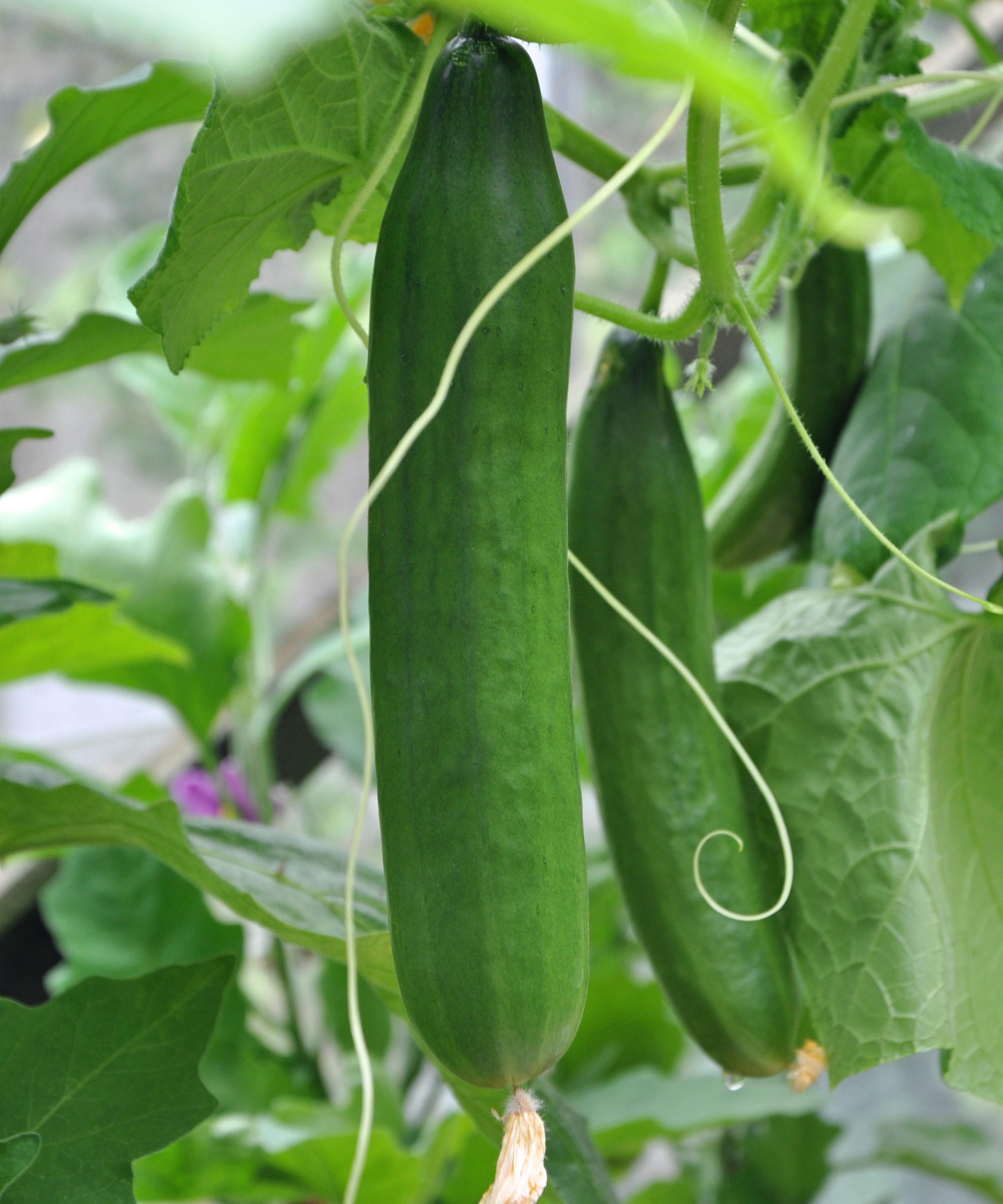
Cucumbers are hungry crops that need regular water and feeding throughout the season to give you a great harvest indoors. Without supplementing the nutrient levels by fertilizing cucumbers, the fast-growing plants can quickly use up all the nutrients in the soil within a container.
It starts with using a quality potting mix in containers and adding a handful of balanced, slow-release fertilizer, such as this all-purpose plant fertilizer at Walmart. Then, once the plants start to flower, feed plants every two weeks with a high-potassium liquid fertilizer, like this organic tomato plant food at Amazon.
Many high potassium fertilizers are often referred to as ‘tomato feeds’ and formulated for use when growing tomatoes and other vegetables. However, there are also natural plant fertilizer alternatives you can use, such as making a comfrey fertilizer.
5. Support plants to prevent disease
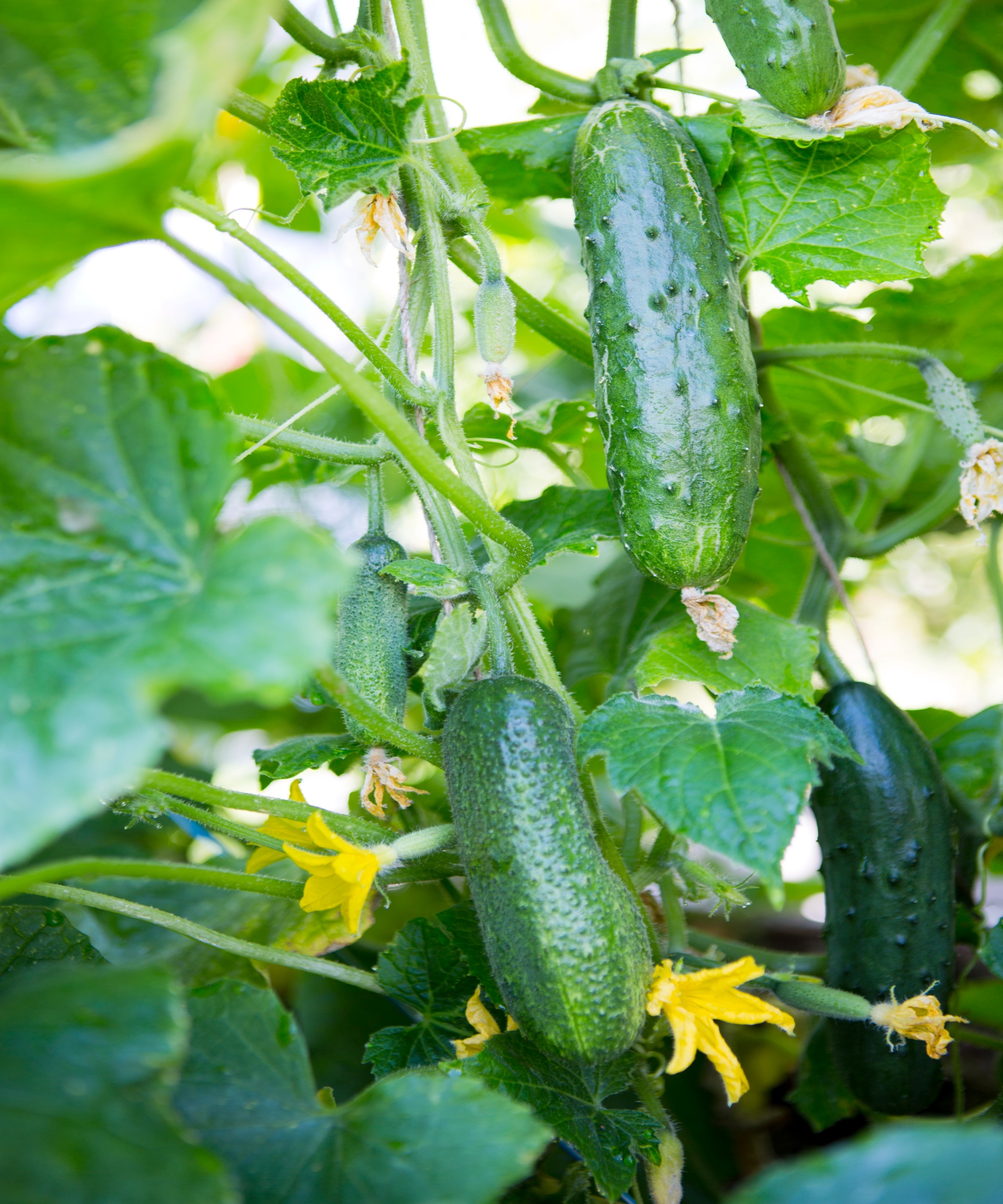
As mentioned earlier, good airflow helps to prevent fungal diseases from wreaking havoc on your plants. Properly training plants and good ventilation are sure-fire ways to reduce risks.
If you opt for vining varieties, these are always cucumbers to grow vertically to save space and provide good airflow around plants. You can train them up a trellis or bamboo support structure, remembering to tie the vines in regularly, and this ensures good air circulation, makes watering easier, and keeps fruits out of reach of pests.
However, Amy Enfield adds that ‘even bush types may need some help to stay upright as they grow’ and this will also reduce the risk of fungal diseases. A small vegetable garden trellis or tomato cage, available at Walmart, can support these smaller types of cucumbers.
Shop seeds to grow cucumbers indoors
FAQs
Can you grow cucumbers on a windowsill?
You can grow cucumbers on a windowsill, and Kate Russell, experienced grower and author of Stop Wasting Your Yard! claims: ‘Adding cucumbers to your windowsill garden will reduce heat coming through the window, cutting your energy bill, while producing the freshest cucumbers possible.’
Pick compact varieties to grow on a windowsill and choose a warm, bright, south-facing location, though you may need to use grow lights too. Keep the plants well-watered and regularly fed, plus look out for pests that may trouble windowsill plants, such as aphids, spider mites, and whiteflies.

Kate Russell helps others make the most of a landscape by incorporating delicious, attractive edible plants. She is the author of 'Stop Wasting Your Yard!', available at Amazon.
If you do not choose a non-partenocarpic (self-pollinating) variety, knowing how to hand-pollinate plants is vital when you grow cucumbers indoors. Otherwise, you risk having no cucumbers to harvest as hand-pollinating is needed for fruit to develop.
‘Hand-pollinating simply means touching each of the flowers several times over several days with a small paintbrush,’ explains Kate Russell. ‘Pollen is extremely sticky. By touching each flower with the paintbrush, you will become the pollinator by transferring pollen from one flower to the next.’
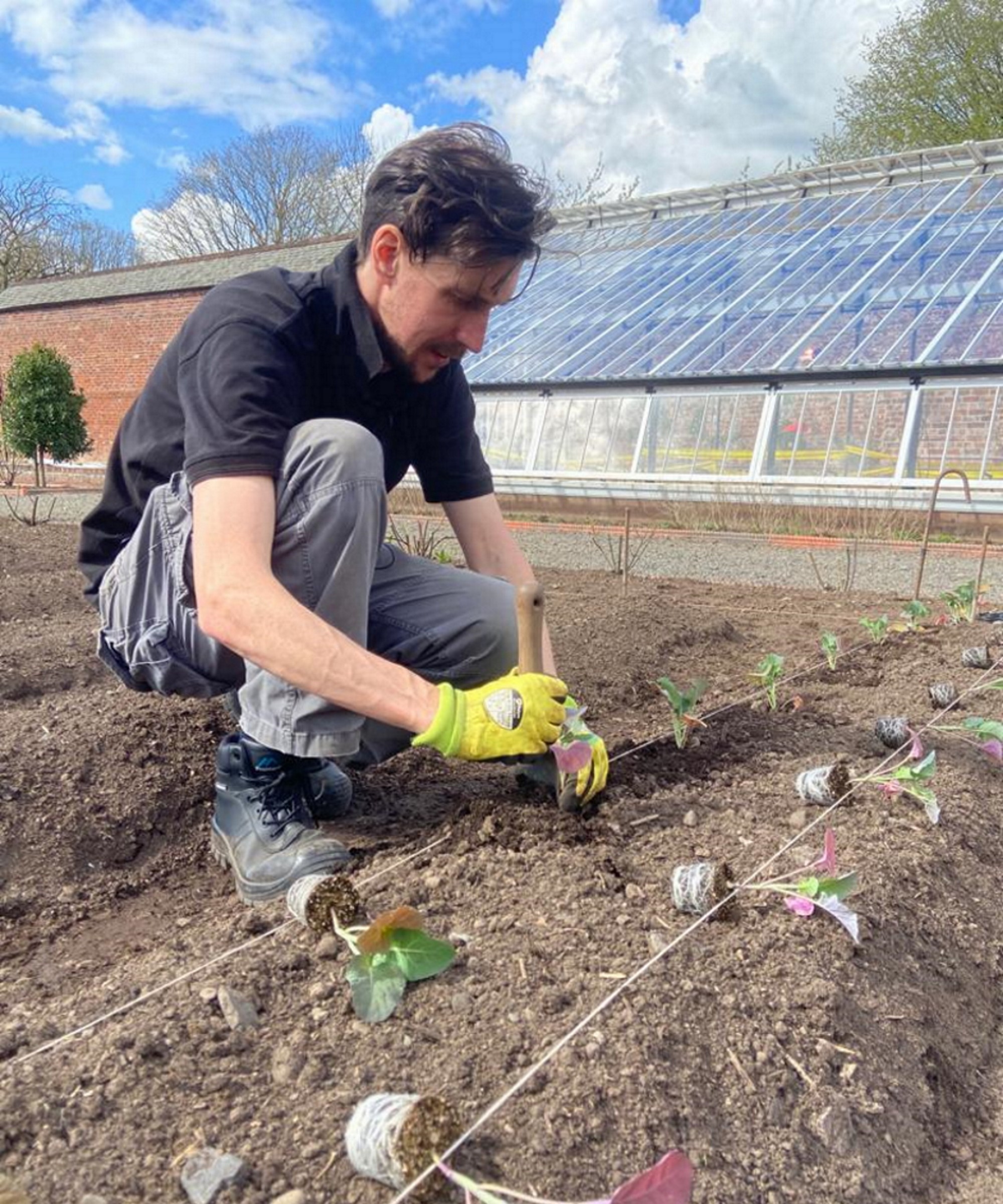
Drew has worked as a writer since 2008 and was also a professional gardener for many years. As a trained horticulturist, he worked in prestigious historic gardens, including Hanbury Hall and the world-famous Hidcote Manor Garden. He also spent time as a specialist kitchen gardener at Soho Farmhouse and Netherby Hall, where he grew vegetables, fruit, herbs, and cut flowers for restaurants. Drew has written for numerous print and online publications and is an allotment holder and garden blogger. He is shortlisted for the Digital Gardening Writer of the Year at the 2025 Garden Media Guild Awards.
You must confirm your public display name before commenting
Please logout and then login again, you will then be prompted to enter your display name.
